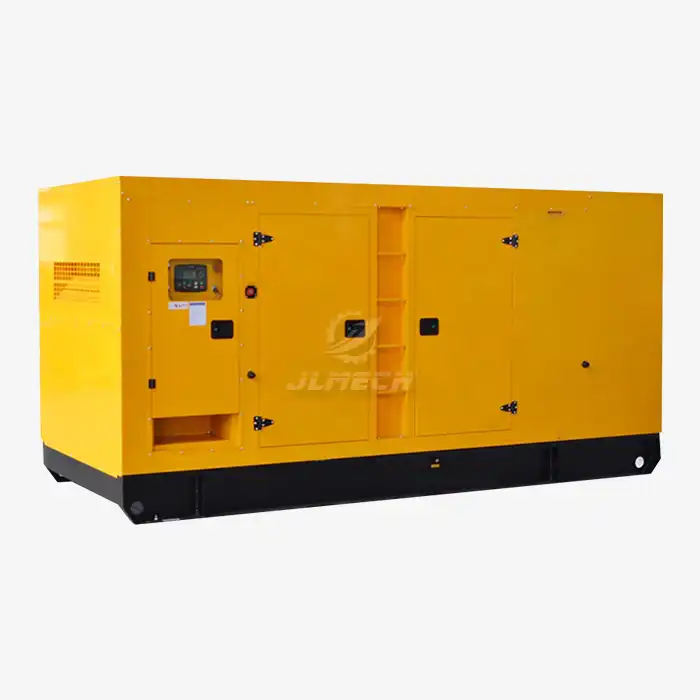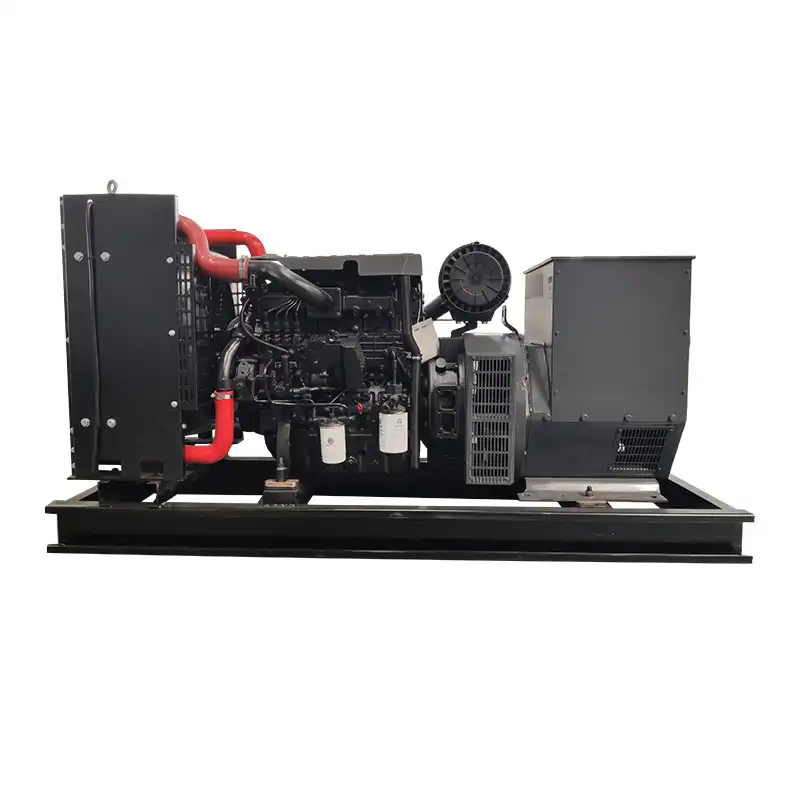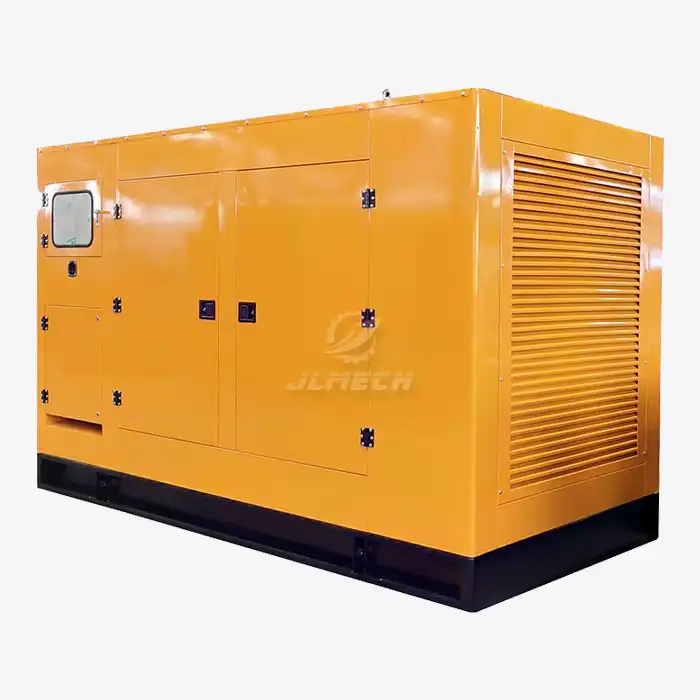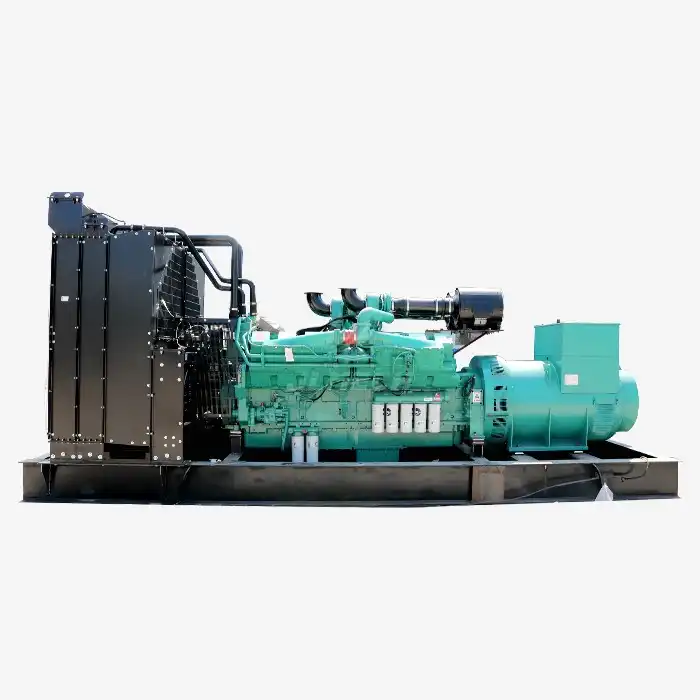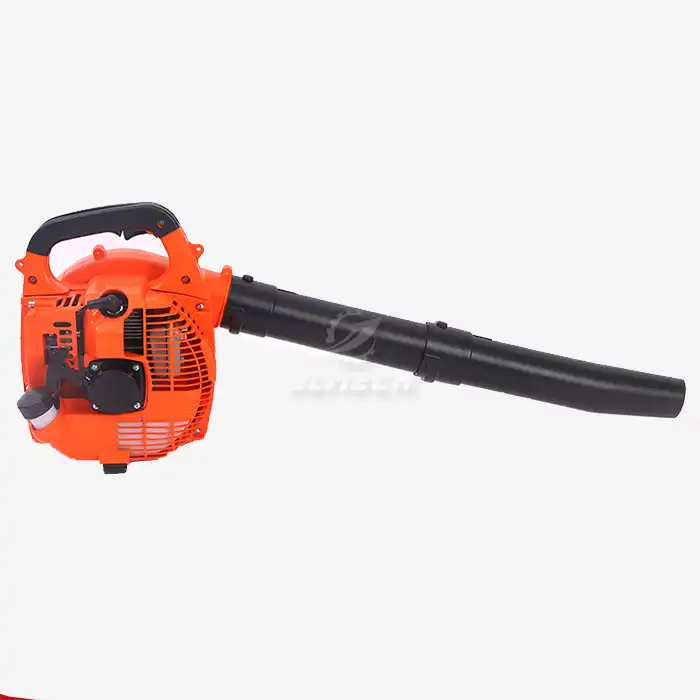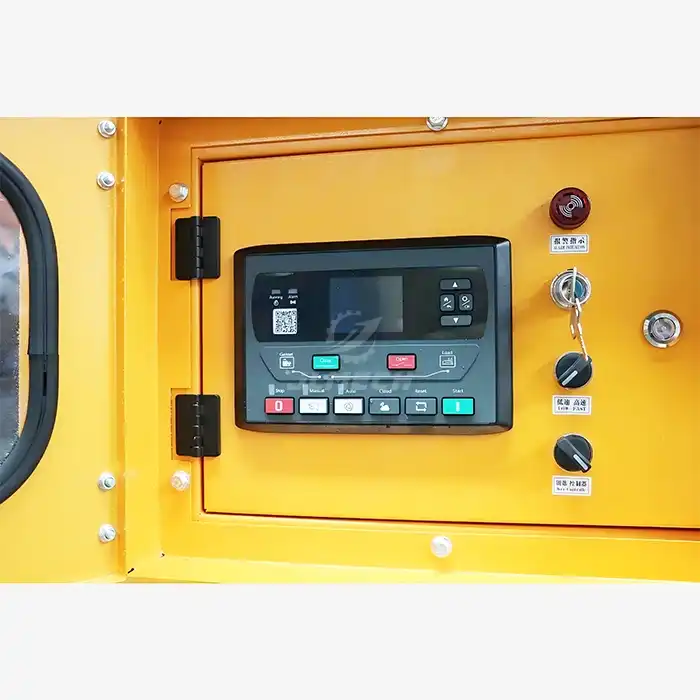How to calculate how many amps a generator can handle?
To accurately calculate amperage, it's essential to grasp the relationship between key electrical concepts: kilowatts (kW), kilovolt-amperes (kVA), power factor (PF), and amperes (A). These units are interconnected and play a vital role in commercial generator sizing.
kW (Kilowatts): This measures the real power—the actual power used to perform work, such as running machinery or lighting. It represents the usable output.
kVA (Kilovolt-Amperes): This measures the apparent power—the total power flowing in the circuit, combining real power (kW) and reactive power (which sustains electromagnetic fields). Generator nameplates are typically rated in kVA.
Power Factor (PF): This is the ratio of real power (kW) to apparent power (kVA), expressed as a decimal between 0 and 1. It indicates how effectively electrical power is being used. For most diesel generators, the power factor is typically 0.8. This means:
kW = kVA × PF
For example, a 100 kVA generator with a PF of 0.8 can produce 80 kW of real power.
Amps (Amperes): This measures the electrical current flow. The relationship between kVA, voltage, and amps is crucial for calculation, as shown in the formulas below.
Understanding these concepts is foundational to accurate commercial generator sizing, ensuring you select a unit that meets your operational demands efficiently.

How to Calculate Generator Amperage
Calculating the amperage a generator can handle involves using specific formulas based on your electrical system's phase type. Here's a straightforward guide:
1. Basic Formulas for Calculation
For Single-Phase Systems:
Amps (A) = (kVA × 1000) / Volts (V)For Three-Phase Systems:
Amps (A) = (kVA × 1000) / (Volts (V) × 1.732)The value 1.732 (√3) accounts for the phase difference in three-phase systems.
2. Step-by-Step Calculation Examples
Example 1: Single-Phase Generator
Assume you have a 25 kVA single-phase generator with an output voltage of 240V.Amps = (25 kVA × 1000) / 240V = 25,000 / 240 ≈ 104.2AThis generator can handle approximately 104 amps.
Example 2: Three-Phase Generator
Assume you have a 100 kVA three-phase generator with an output voltage of 480V.Amps = (100 kVA × 1000) / (480V × 1.732) = 100,000 / 831.36 ≈ 120.3A
This generator can handle approximately 120 amps.
3. Key Considerations for Accurate Calculations
Starting vs. Running Load: Motor-driven equipment (e.g., pumps, compressors) requires significantly higher starting amps (often 3-6 times running amps) than "running amps". Ensure your generator can handle these surges to prevent overloads.
Voltage Specifications: Always verify the standard voltage in your region (e.g., 120V/240V for single-phase, 480V for three-phase) and ensure your generator matches it.
Power Factor: Use the generator's nameplate power factor (typically 0.8 for diesel units) for precise calculations. If unspecified, 0.8 is a safe assumption.
Derating Factors: Environmental conditions like high altitude, temperature, and humidity can reduce a generator's output capacity. For instance, generators derate by 3-5% for every 1,000 feet above sea level.
Load Management: Avoid operating the generator at 100% capacity. For continuous operation, aim for 70-80% load to enhance longevity and efficiency.
These steps and considerations are integral to proper commercial generator sizing, helping you avoid common pitfalls like under-sizing or over-sizing your system.
Conclusion
Accurately calculating the amperage your generator can handle is essential for ensuring a reliable, efficient, and safe power supply for your business operations. By understanding the relationship between kW, kVA, power factor, and amps, and applying the correct formulas for your electrical system, you can make informed decisions that optimize performance and protect your equipment. However, real-world applications often involve complexities like motor starting currents and environmental factors, making professional guidance invaluable.
At JLMECH, we specialize in commercial generator sizing and providing robust, reliable power solutions tailored to your unique needs. With extensive expertise in the industry and a commitment to quality, we help you navigate the complexities of generator selection, ensuring you get the perfect fit for your operational requirements.
Email our experts at skala@whjlmech.com for a free consultation and quotation. Let us help you design a power solution that guarantees efficiency, reliability, and peace of mind for your business.
References
International Organization for Standardization. (2022). ISO 8528-1:2022 - Rotary diesel generating sets - Part 1: Application, ratings and performance.
U.S. Department of Energy. (2021). Best Practices for Diesel Power Generation in Industrial Applications. DOE Technical Reports.
Johnson, A. (2010). Emergency Power Systems: A Comprehensive Guide to High-Speed Diesel Generators. Power Engineering Quarterly, 45(3), 78-92.
Roberts, S., & Nielsen, T. (2022). The True Cost of Power Interruptions in Large-Scale Mining. Resources Policy, 75, 101521.
MacDonald, L. (2022). Power System Design for Remote Mining Sites. Mining Engineering Journal, 34(4), 56-67.



